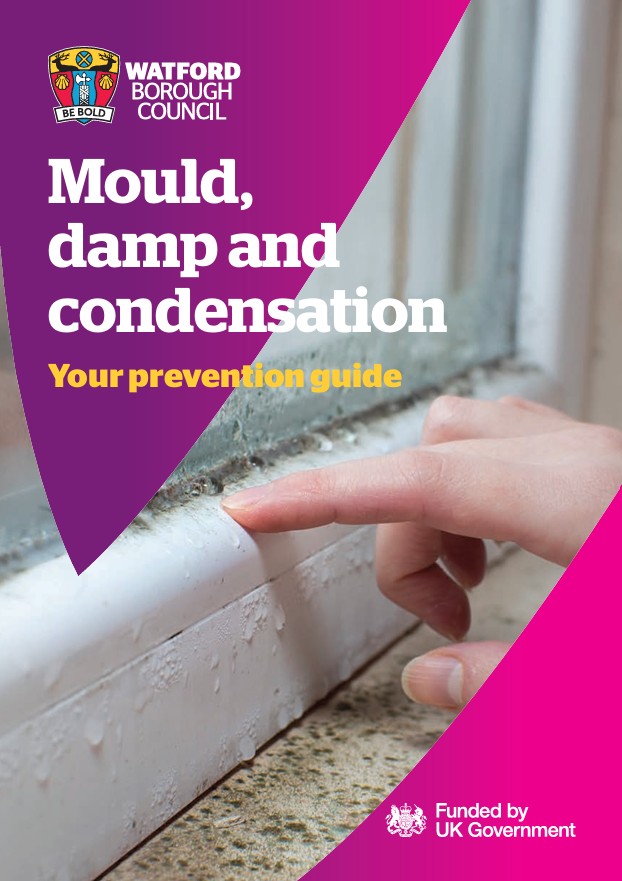In this section
Damp and Mould
Damp can cause mould on walls and furniture and can rot woodwork in properties. Housing that is damp and cold can encourage the growth of mould and mites that can be harmful to health.
Most cases of dampness reported to the council are linked to condensation. This occurs when there is too much moisture in the air and it condensates out on cold surfaces. Just like what happens to a bathroom mirror when having a shower.
You can help by making less moisture in your home:
- Keep doors to moisture producing rooms such as kitchens and bathrooms shut
- Dry your clothes outside if possible
- Put lids on your pots and pans while you cook
- Wipe down condensation on windows
You can also deal with condensation problems by increasing the ventilation and heating in the property. Here's how you can do this more effectively:
- Open windows
- Open window Trickle Vents and use Background Latches if you have them
- Turn on extractor fans
- Keep your home heated to at least 18 degrees Celsius
- If you have storage heaters, it's important you know how to use them and that you are on the correct electricity tariff
- Use a hygrometer to help you manage ventilation and heating.
You can also help by improving your home’s insulation, which will also save you money:
- Better Housing Better Health can help with advice and support with insulating your property.
You need to make sure your home is in good condition and that nothing is damaged or broken in a way that lets water into the property, such as:
- Rising Damp - this is where moisture rises from the ground through the walls of the home. It will leave a ‘tide mark’ on your skirting board or walls
- Penetrating Damp - this is where moisture comes through the walls, roof, floor, doors or windows. Penetrating damp may get worse when it rains, especially if it’s windy at the same time
- Defective plumbing - leaks from water or waste pipes.
Visit us at one of our Healthy Hub sessions to speak to someone in person about how to prevent damp and mould, to pick up a free hygrometer and get more information about the health and wellbeing support we offer.
Damp and mould in rented properties
If you are a tenant, you should report problems with damp and mould to your landlord. Your landlord should make sure that there is:
- A suitable heating system for the property
- Adequate means of ventilating the property
- Adequate insulation (where possible)
- No disrepair that is causing damp to come into the property.
If you rent from a Housing Association or Registered Social Landlord (RSL) they will have procedures in place to respond to your complaint within certain timescales. Find out more about how to report disrepair to your Social Landlord and about the new Awaab's Law that requires social landlords to investigate and fix emergency and significant hazards within strict timeframes.
If your landlord does not carry out the necessary repairs and improvements, you can ask the council for help.
Report damp or mould in your rented property online
Further advice for damp and mould in rented properties
Further information for landlords and homeowners
Learn who can help with Home improvements and repairs, like insulation and making your home more energy efficient.
Government advice for landlords on damp and mould is available on GOV.uk.
Professional Referrals
Social Services, Fire Service, GPs, Health Workers etc can report properties of concern to us. You can report private rented, social rented and owner-occupied properties via this link.
Statutory Information
- See our action plan on damp and mould

